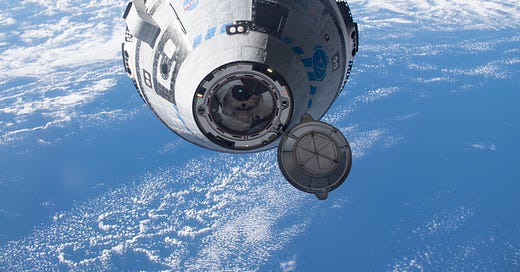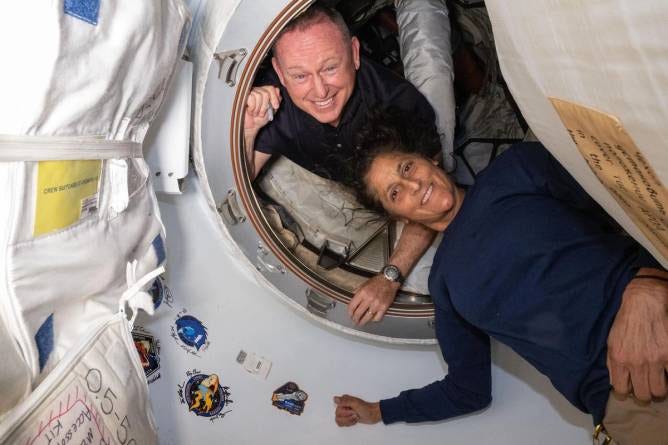Two U.S. Astronauts, Including Sunita Williams, to Remain in Stranded Space Until February
NASA Extends Astronauts' Stay on the International Space Station (ISS) Due to Boeing's Starliner Capsule's Multiple Snags and Safety Concerns.
NASA's Decision to Prioritize Safety
In a significant move that underscores NASA's unwavering commitment to astronaut safety, the agency on Saturday revealed that it had decided to extend the stay of two US astronauts on the International Space Station (ISS) until February. This decision follows a series of technical malfunctions in Boeing’s new Starliner capsule, originally tasked with bringing the astronauts back to Earth. The capsule, which was intended to be a cornerstone in NASA's commercial crew program, has faced multiple setbacks since its launch, including thruster failures and helium leaks.
The Challenge with Boeing's Starliner
The Boeing Starliner was envisioned as a reliable spacecraft that could complement Elon Musk lead-SpaceX's capabilities, offering NASA a diversified approach to human spaceflight. However, the recent flight exposed critical design flaws. Problems with the thruster system and subsequent helium leaks have raised serious safety concerns. Although Boeing conducted extensive ground tests to troubleshoot these issues, the unexpected malfunctions in space have led NASA to deem it too risky for a crewed return trip.
Meet the Astronauts: Butch Wilmore and Suni Williams
Astronauts Butch Wilmore and Suni Williams, both retired Navy captains with extensive spaceflight experience, are the ones directly impacted by this decision. Since their arrival on the ISS in early June, they have been actively involved in station maintenance and scientific research. Known for their resilience and professionalism, Wilmore and Williams have expressed support for NASA's decision, demonstrating their understanding of the complexities and risks associated with space travel.
Current Status of the ISS Crew
Alongside Wilmore and Williams, the ISS is currently home to four other astronauts who arrived aboard a SpaceX Dragon capsule in March. This crew was originally scheduled to return in September, but their mission has been extended by a month due to the Starliner issues. Additionally, the station accommodates two Russian cosmonauts, completing a diverse team committed to furthering our understanding of space and conducting groundbreaking research.
Boeing's Struggles and Future Prospects
Boeing’s difficulties with the Starliner capsule are not isolated incidents. The company has faced a series of challenges with its space program, mirroring the struggles seen in its commercial aviation sector. While the recent developments are a setback, NASA has made it clear that it remains hopeful for the future of Boeing's contributions to space exploration. Efforts are already underway to rectify the Starliner’s issues, with plans to conduct another crewed mission within the next year.
The Role of SpaceX and Future Missions
As Boeing grapples with these technical issues, SpaceX has emerged as a reliable partner for NASA. With multiple successful crewed missions to the ISS under its belt, SpaceX’s Dragon capsule will now serve as the return vehicle for Wilmore and Williams. The Dragon capsule, set to launch with a reduced crew in late September, will ensure that the stranded astronauts return safely to Earth in February.
Lessons from Past Incidents
NASA's decision to delay the return of the astronauts reflects lessons learned from past tragedies, such as the Columbia disaster in 2003. The emphasis on open dialogue, thorough testing, and prioritising crew safety demonstrates NASA's commitment to avoiding complacency in human spaceflight. This incident serves as a reminder of the inherent risks associated with space exploration and the importance of rigorous safety protocols.
An Optimistic Future
Despite the setbacks, the mood at NASA remains cautiously optimistic. The agency's decision to delay the astronauts' return in favour of safety is a testament to its dedication to human life and scientific integrity. The issues faced by Boeing, while significant, are seen as part of the growing pains of advancing space technology. With continuous efforts to address these challenges, the future of human space exploration looks promising, bolstered by the resilience of astronauts like Wilmore and Williams and the robust partnerships that continue to drive progress.
Accessibility and Inclusion in Space Missions
As NASA navigates these complex challenges, it remains committed to making space exploration accessible to all. By learning from each mission and enhancing safety protocols, NASA ensures that space remains a frontier of innovation and discovery for everyone. The decision to delay the return of astronauts, while difficult, highlights the agency's dedication to the well-being of its crew and the future of human spaceflight.
On a parting note, we leave you with our article that we first published in June, when the snag was first reported and the return trip of the dynamic duo was delayed1.






